AOPS Pre-Algebra – a review
This review is intended to share our experiences of working through this excellent maths textbook. It covers questions such as when we switched from Beast Academy, how we used the course, Alcumus, and length of time spent.
AOPS is a challenging maths curriculum, which expects quick absorption of new concepts and a high degree of tolerance for hard problem-solving. It is a good fit for some of my children and not for others. I haven’t gone into detail in this review about the AOPS approach to maths, but it is important to consider whether that is a good fit for your child before starting out with AOPS Pre-Algebra.
- What maths were we doing before AOPS Pre-Algebra?
- Goals for AOPS Pre-Algebra
- How we used AOPS Pre-Algebra
- Alcumus and AOPS videos
- Harder chapters
- How long did AOPS Pre-Algebra take?
- Where to purchase AOPS Pre-Algebra
What maths were we doing before AOPS Pre-Algebra?
My child was using a combination of Beast Academy 5A and 5B, and Maths No Problem 6, which is a UK-specific version of Singapore Maths.
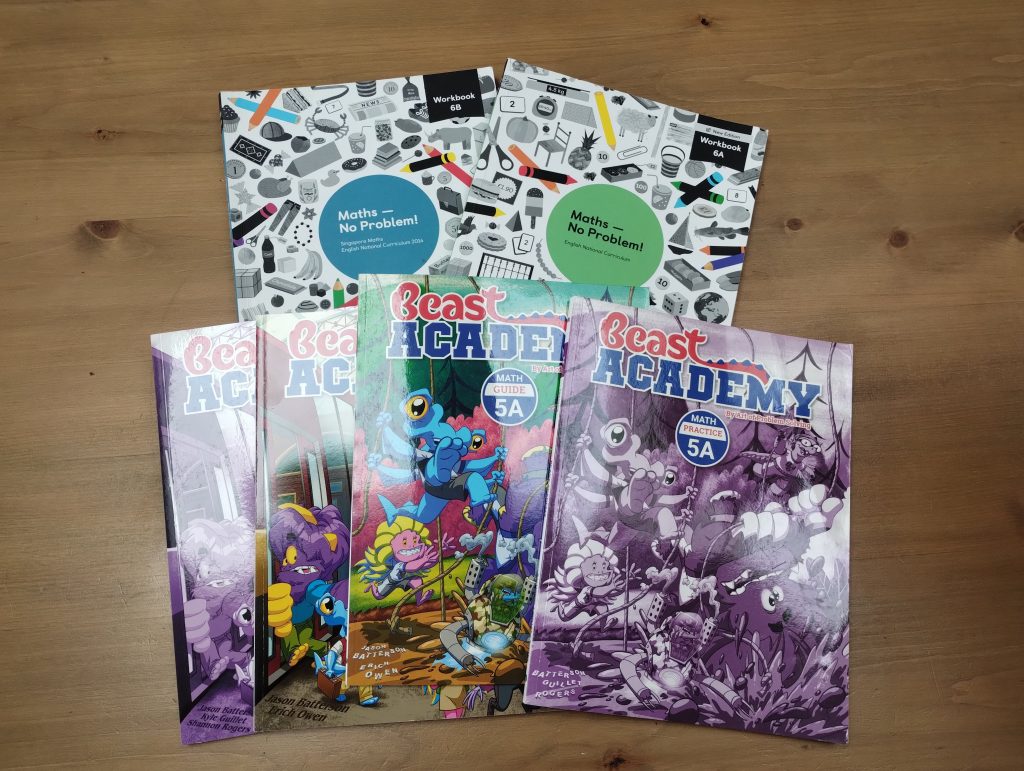
The topics covered in Beast Academy 5 are very similar to those covered in AOPS Pre-Algebra. However, I was nervous about whether my child was ready to make the transition from Beast Academy (monsters and cartoons) to grown-up AOPS (fat textbooks, no monsters).
I decided to make the transition whilst we still had a couple of books of Beast Academy still to play with. That way, if the transition to AOPS was hard, we could ease into it with alternating days of Beast Academy and AOPS.
The transition actually went very well, so that we never did end up using Beast Academy 5C and 5D.
Goals for AOPS Pre-Algebra
My main goal for Pre-Algebra was to work on transitioning to a more grown-up style of maths curriculum. In particular, I felt that my child, whilst mathematically ready for algebra, still needed some experience in making orderly notes in an exercise book, and showing their workings methodically. I also wanted to make the transition to a meatier, less ‘kid-friendly’ style of textbook on material that was not completely new.
The learning goal here was therefore not primarily ‘maths content’ but ‘maths skills’.
That being said, there were quite a few topics that were new (e.g. repeating decimals, some of the geometry), and the level of challenge on other topics was significantly higher than my child had previously encountered.
How we used AOPS Pre-Algebra
I planned to start the curriculum after a break from school. For the last few days of the break, we sat down and began working on AOPS Pre-Algebra together for about half an hour a day. I wanted to make sure my child understood the format, what they needed to write down, and I wanted to be available to tackle any teething issues. We were also working on using a maths exercise book – writing the date, question numbers, leaving space, etc.
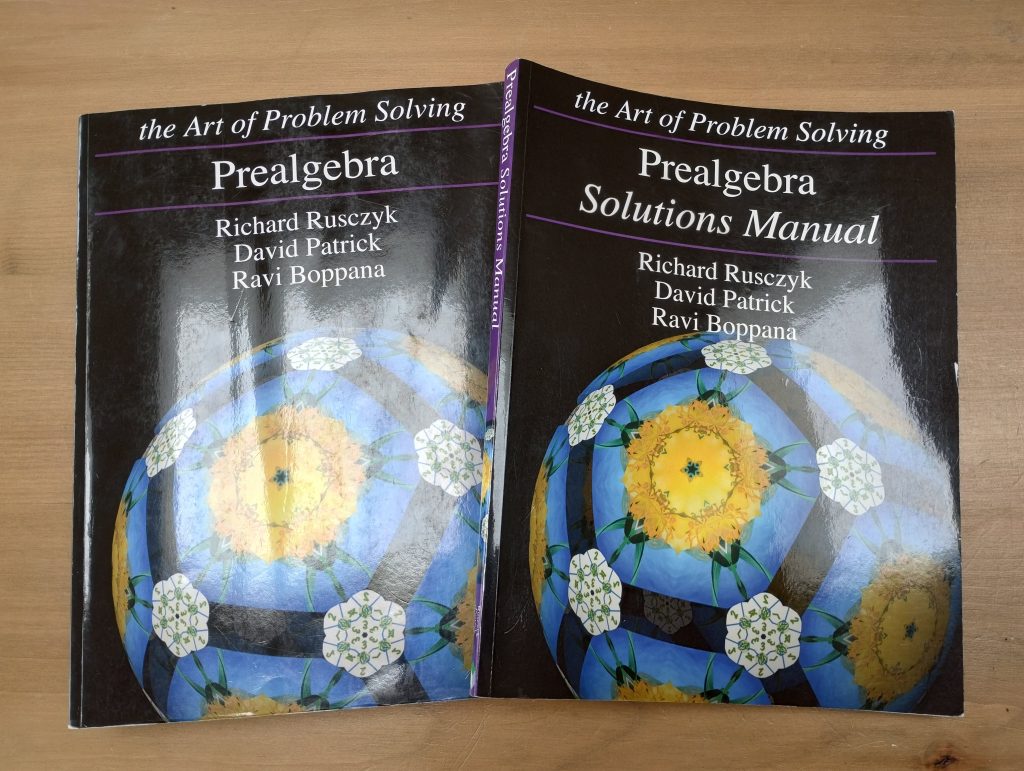
From then on, my child worked on maths independently for 45 minutes each day. I didn’t have a set amount of work for them to complete each day, just whatever they could get done in the available time. The order of working was usually like this:
- Complete the Problems for a Section
- Read answers to Problems (in textbook) and mark own work
- Complete Exercises for a Section (parent marks these later)
- Complete Alcumus online for that Section
- When all Sections of a Chapter are complete, do the Review and Challenge problems.
After each day’s maths lesson, I would then mark their work, discuss anything they hadn’t understood, and write up corrections for the next day. Sometimes these corrections were quite extensive. I would use the answer guide to help me write a hint for each incorrect question.
I did allow my child to occasionally leave a ‘question mark’ for questions they were really stuck on, especially in the challenge sections, and we would look at those together. I didn’t want them to get really frustrated and stuck. This seemed to work well for us.
My child worked through the whole textbook, in order, completing every problem including all challenge problems. Some of the opening chapter problems required ‘wordy’ answers, and I was happy for these to be given orally.
Alcumus and AOPS videos
We also used Alcumus alongside the textbook. After completing the Exercise problems at the end of a section, my child would then complete the associated Alcumus section online until it has a blue progress bar. My child really likes Alcumus, and would sometimes work on it for fun outside of lessons. The mild ‘gamification’ of the Alcumus progress bars and challenges is highly motivating.
There are free online videos from Richard Rusczyk accompanying the Pre-Algebra course. We looked at a couple of the harder ones before starting the course, and like the videos, but we didn’t use them. I wanted to move through the material fairly quickly, and felt that almost all of it was well within my child’s grasp, such that they didn’t need the additional tuition time.
Harder chapters
People generally mention Chapter 2 (Exponents) and Chapter 5 (Equations and Inequalities) as being particularly difficult and time-consuming, and this was also our experience. It felt as though the book got easier in the latter half, and my child particularly enjoyed the geometry chapters. I think our experience of different chapters was fairly standard, looking at the online comments of other users.
How long did AOPS Pre-Algebra take?
It took us 6.5 months to complete AOPS Pre-Algebra. My child worked for 45 minutes, 5 days per week, and occasionally did some Alcumus in their free time. Having read a few other people’s experiences, my understanding is that this is on the shorter end of timescales for AOPS Pre-Algebra, and that many people spend a year or more on the book, up to about 18 months.
Where to purchase AOPS Pre-Algebra
This post contains affiliate links. As an Amazon Associate, I earn from qualifying purchases.
For us in the UK it can sometimes be quite challenging to purchase AOPS products. Postage directly from AOPS can be prohibitively expensive. I have used shipping agents in the past, but recently I have found Amazon the most cost-effective solution. It is worth checking out both the UK Amazon website and the US Amazon website, as the latter will often ship to the UK, and it can work out cheaper. I generally find the delivery times to be about the same, as the books are usually coming from the US anyway. You will need both the textbook and the solutions manual. If purchasing new it is generally cheaper to purchase them together, but if you are purchasing used, it may work out better to purchase them separately.

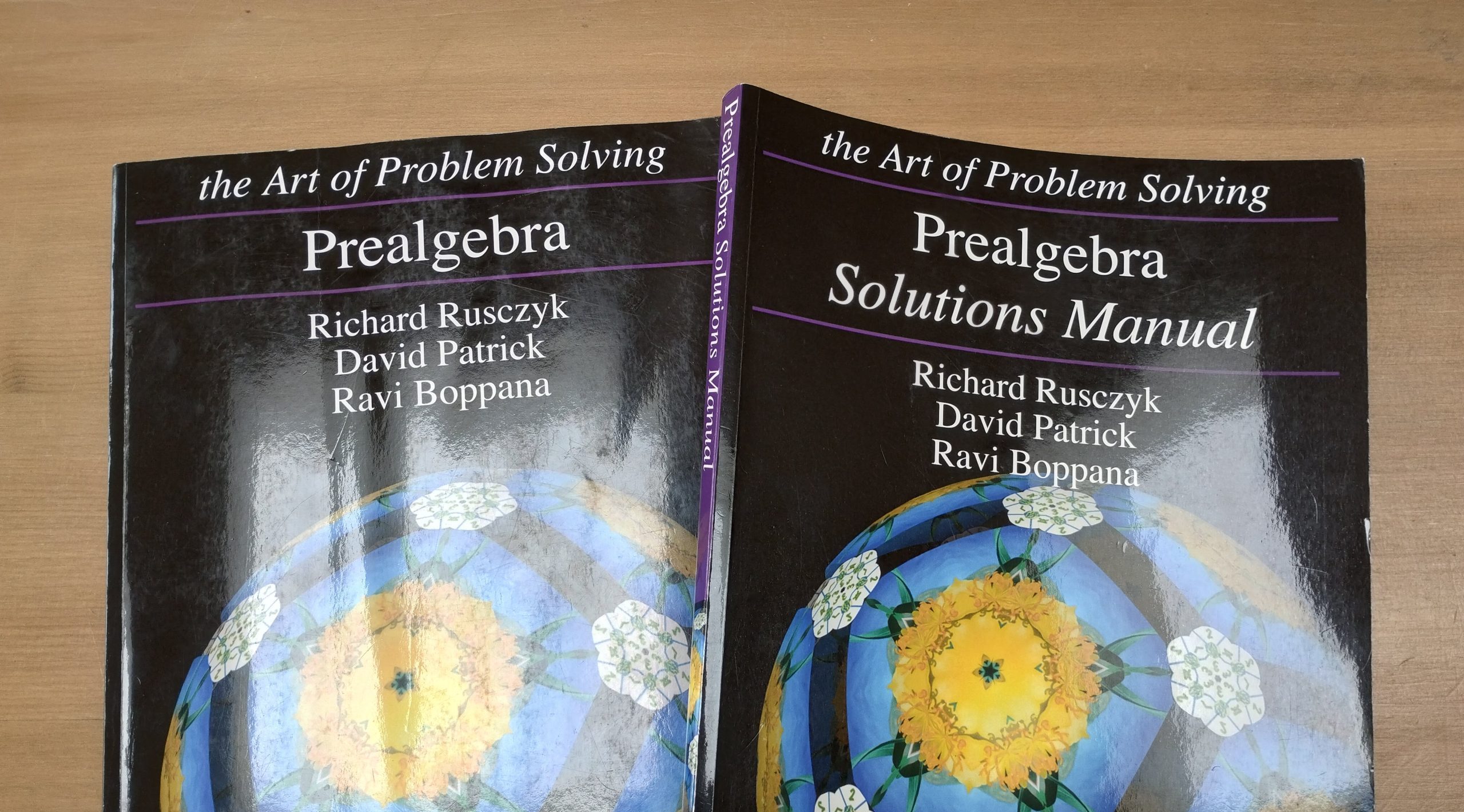
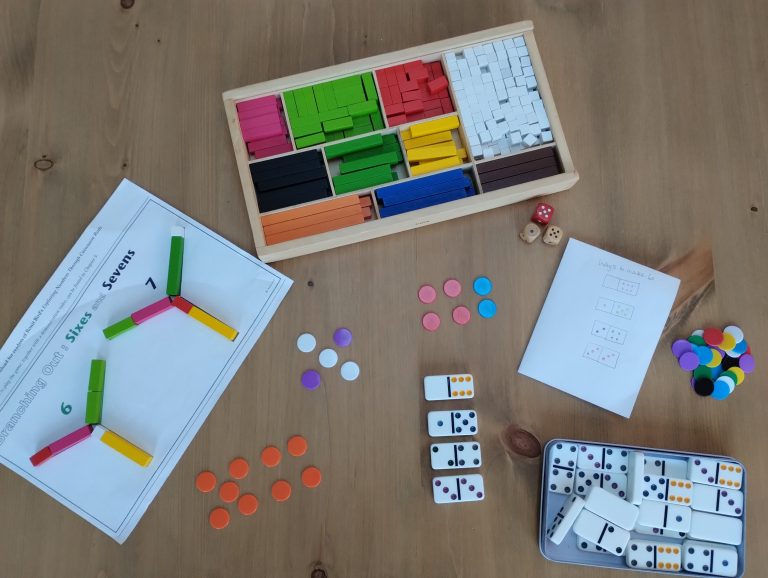
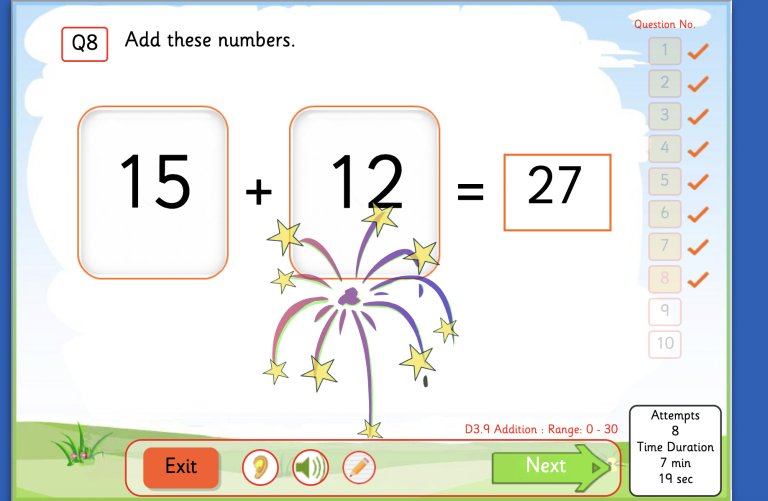
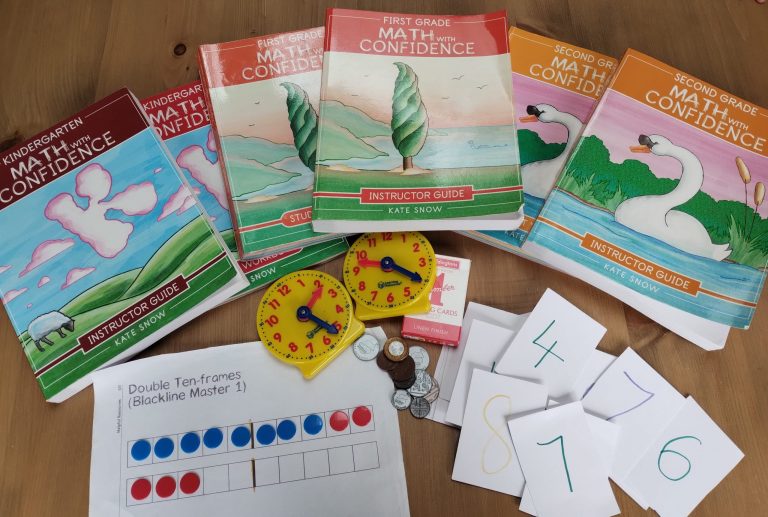
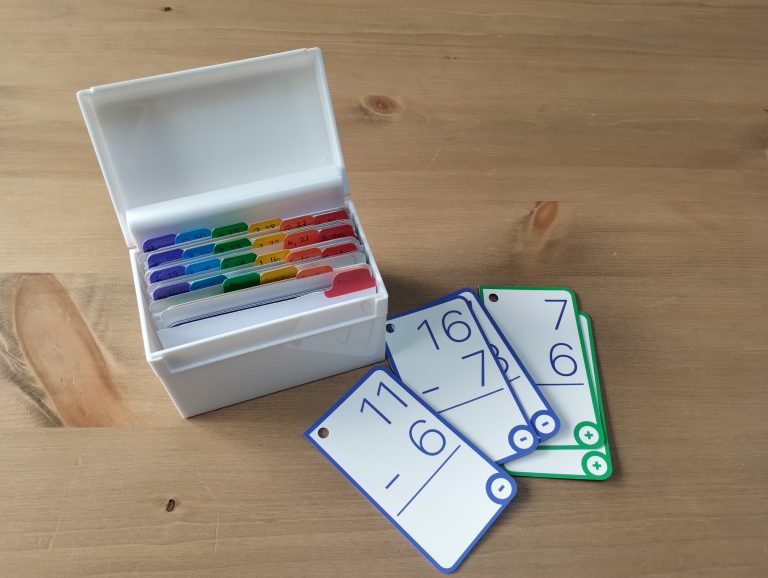
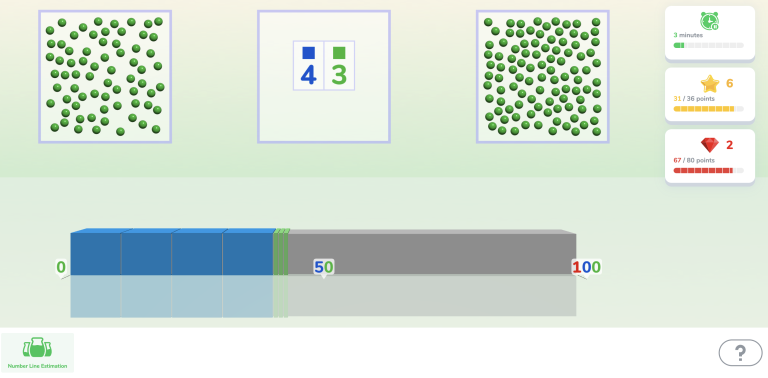
Is AOPS written to the student? My math skills are not the best so I need something that can be done independently and I just check the answers.
Hi Jessica,
Yes, AOPS is written to the student, there isn’t a portion that you need to teach. Each chapter typically begins with problems, and then the ‘meat’ of the topic is in the explanation of the answers, so the student needs to be prepared to have a go at something new in the initial problems, and not worry about getting things wrong. The explanation can be quite wordy. I think some children would probably benefit from going through that explanation section with an adult.
I would also say that the challenge problems at the end of each chapter are very….challenging! Sometimes I can’t immediately see how to go about answering them, and need to refer to the solutions manual to give appropriate tips. Every question has a full explanation in the solutions manual.
When marking, I don’t typically just mark things wrong and send them back to be corrected, I look at the answer and try to figure out where my child’s understanding went wrong, so that I can get them back on track and they can make a more successful attempt at the question. I do think it is quite important to be able to work back from the solutions in the manual and find out where the student went off-course.
There are some quite good sample pages on the AOPS website, so it might be worth having a look at those:
https://artofproblemsolving.com/store/book/prealgebra